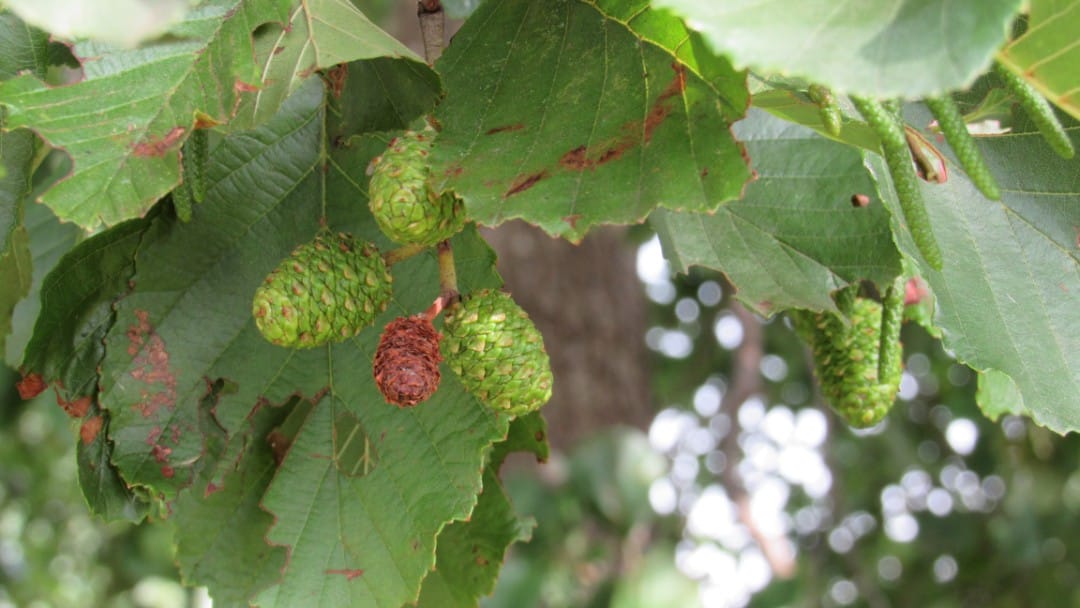
Grey Alder
Alnus incana
Grey alder produces both male and female catkins on the same tree.
About
Grey Alder
The Appearance
A medium-sized deciduous tree with a conical shape and rounded, serrated leaves that turn yellow in autumn. It produces small, woody cones.
The Produce
The male catkins are elongated and yellow, while the female catkins are smaller and green.
The Flowers
Produces small, yellow catkins in spring, followed by woody cones in autumn.
The Leaves
They are dark green on the upper surface and paler on the underside.
The Habitat
Prefers well-drained soils and full sun. Commonly found along riverbanks and in woodlands.
The Ecology
Provides habitat and food for various wildlife, including birds and insects. The leaves and cones offer food and shelter.
The Culture
Valued for its fast growth and ability to improve soil fertility through nitrogen fixation. Often planted for erosion control.
Fun Facts
Grey Alder is known for its ability to thrive in poor soils and its use in land reclamation projects.

Explore Deeper With The Interactive Map
Unleash your inner explorer with our interactive map of the Arboretum. This live map labels the location of every tree in the arboretum, providing detailed information on each one.
Dive into the fascinating stories behind each tree, learn about their origins, characteristics, and unique attributes. The interactive map is your perfect companion for an engaging and educational adventure. Discover the rich tapestry of nature with just a few clicks!
Arboretum Index
Explore Burton Constable Holiday Park
Uncover the Charm of a Family-Run Holiday Park on Timeless 18th Century Grounds
Holidays At Burton Constable Holiday Park
On-Park Amenities
Bar & Beer Garden with a lively atmosphere
Catering van crafting weekly specials
Grab your grocery essentials, hot food and a sweet treat
